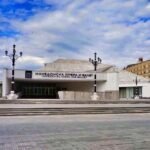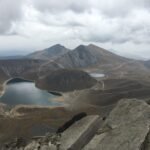Annecy, located just over 30 kilometers from Geneva, is a renowned old town in southeastern France. It belongs to the Auvergne-Rhône-Alpes region, specifically the Haute-Savoie department. Annecy is stunningly beautiful, nestled between the majestic Alps and the sparkling waters of Lake Annecy, with the meandering Thiou River running through it. The city’s seamless connection between lake and river has earned it the nickname “Venice of Savoie.” Surrounded by mountains and forests under the “roof of Europe” — the Alps — Annecy is also called “the viewpoint of the Alps,” making it arguably the most picturesque town in the region. With a mild climate and fresh air, Annecy is a perfect destination year-round.
Despite being the capital of Haute-Savoie, Annecy is relatively small, covering less than 14 square kilometers with a population of just over 50,000. However, in 2017, Annecy merged with five neighboring communes — Old Annecy, Cran-Gevrier, Meythet, Pringy, and Seynod — expanding its area to 67 square kilometers and its population to over 120,000, becoming the largest city in the department and moving up to 29th place among French cities by population. Geographically, Annecy sits between two historic towns: Geneva and Chambéry, absorbing influences from both. It combines classical charm with romantic flair, reflecting its medieval origins.
Although the region once hosted a Roman town named Boutae, it was lost to barbarian invasions. The modern Annecy took shape in the early 12th century when Count Amadeus I of Geneva founded it along the banks of the Thiou River to capitalize on waterway trade. However, internal disputes within the Geneva family led to the town being incorporated into the Savoy domain under Amadeus VIII in the 15th century, along with the rest of the County of Geneva. This marked the beginning of Annecy’s role as the capital of the Duchy of Savoy.
In the 16th century, during the religious wars, Annecy became a center of the Counter-Reformation. The relocation of the Bishop of Geneva to Annecy enhanced its religious stature, with new religious buildings further solidifying its identity as the “Rome of Savoy.” Over the following century, Annecy changed hands multiple times between the Holy Roman Empire, Spain, France, and the Kingdom of Sardinia. During the French Revolution, Annecy, along with Savoy, briefly fell under French control. However, after the Bourbon Restoration in 1815, the region returned to the Sardinian kingdom. In 1860, Savoy was officially annexed by France, making Annecy the capital of Haute-Savoie.
Following its integration into France, Annecy flourished during the Industrial Revolution, boosted by the opening of the railway. The town gradually evolved into a modern city and regional hub. The emergence of winter tourism in the Alps at the end of the 19th century brought new vitality to Annecy. Its natural ice and snow landscape, combined with unique mountain and lake views, drew countless visitors, particularly among the French middle and upper classes. Many chose to vacation or even relocate to Annecy, further stimulating tourism, real estate, and various industries. Today, Annecy stands as one of the most popular tourist cities in eastern France.


Annecy’s most captivating scenery is undoubtedly Lake Annecy. Formed by glacial activity, this glacial lake spans 26 square kilometers, making it the 14th largest natural lake in France. As the lake’s water comes entirely from melted snow on the Alps, imbued with the essence of nature over time, Lake Annecy is hailed as the purest lake in Europe. The water remains crystal clear throughout the year. In summer, under the bright sun, the lake shimmers with a brilliant emerald blue. Even in winter, the water glows with a dreamy shade of greenish-blue. The pristine water and blue skies, set against the snow-capped peaks and lush hills, create an idyllic, postcard-perfect landscape — truly a scene from a fairytale.
It is no wonder that even the French Enlightenment thinker Jean-Jacques Rousseau was enchanted by this place, spending what he described as the “best 12 years of his life” in Annecy.


By the shores of Lake Annecy lies a vast expanse of greenery called the Jardins de l’Europe (Gardens of Europe). This large park draws many visitors, who gather on the lush lawns and stroll along the lakeside paths, either walking their dogs, jogging, or cycling. The docks along the lake are filled with boats of all sizes, and many tourists opt for a boat ride to drift across the lake, savoring the charm and tranquility of the small town at leisure.
While gliding on the water, gazing at the rolling peaks of the Alps in the distance, and watching the dreamy reflections on the lake’s glassy surface, one feels enveloped by the rhythmic lapping of gentle waves. Immersed in this peaceful, serene atmosphere, all the hustle and worries of city life seem to melt away. It’s no wonder that so many French locals and travelers alike find themselves lost in the beauty and tranquility of this place, unwilling to leave.


The old town of Annecy is undoubtedly a highlight of any visit. Nestled along the lake, the Thiou River flows through the heart of the town, connecting it with Lake Annecy. At first glance, the well-maintained river resembles a canal, stretching from the lakeside town hall deep into the city. The river is narrow, with crystal-clear water, where flocks of water birds glide gracefully, adding to the serene ambiance.
The main streets of the old town line both sides of the river, and many of the buildings date back to the 12th to 17th centuries. Since the town escaped the devastation of both World Wars, these historic homes remain perfectly preserved. The cobblestone streets still retain their medieval charm, with most converted into pedestrian zones. Shops, hotels, and restaurants abound along the streets, though outdoor cafés dominate the scene.
The windowsills of the street-facing and riverside houses are adorned with vibrant potted plants, while arches and bridgeheads bloom with flowers. With colorful stone houses, lush greenery, and vibrant blossoms, the scenery creates a kaleidoscope of colors, dazzling visitors with its picturesque charm.

The most iconic historic site among the old buildings in Annecy is the Palais de l’Isle, located on a small island in the middle of the Thiou River. Also known as the Island Palace or Palace of the Isle, it was formerly called the Old Prison and was built in 1132. Its exterior resembles a triangular-shaped ship, and due to its unique design, it has become one of the most photographed buildings in Europe.
Not far from the island, at the end of Saint-Claire Street on a high slope, stands Annecy Castle, another emblematic attraction of the town. The castle, which dates back to the 12th to 16th centuries, was once the residence of the Counts of Geneva. It was later destroyed by fire and repurposed as military barracks. In 1953, the castle was taken over by the local government and converted into a museum after restoration. The Queen’s Tower, built in the 12th century, is the oldest remaining part of the castle. From the castle’s observation platform, visitors can enjoy panoramic views of the town and Lake Annecy.


The old town also features other historic buildings, including the Notre-Dame de Liesse, the Church of Saint-François, and the Church of Saint-Maurice, all of which are listed as French national heritage sites. Annecy, with its wealth of historic buildings, has earned the designation of an Art and History City of France. These cultural landmarks, together with the town’s charming streets, flowing rivers, blooming flowers, and surrounding mountains, create a picturesque and vibrant cityscape that captivates visitors from around the world.
Starting from the town hall by the lakeshore, we explored the European Gardens, Lovers’ Bridge, the Palais de l’Isle, Saint-Claire Street, and Annecy Castle. Finally, we strolled back to the lake through the old town’s backstreets, making a full circuit while enjoying the scenery along the way.



